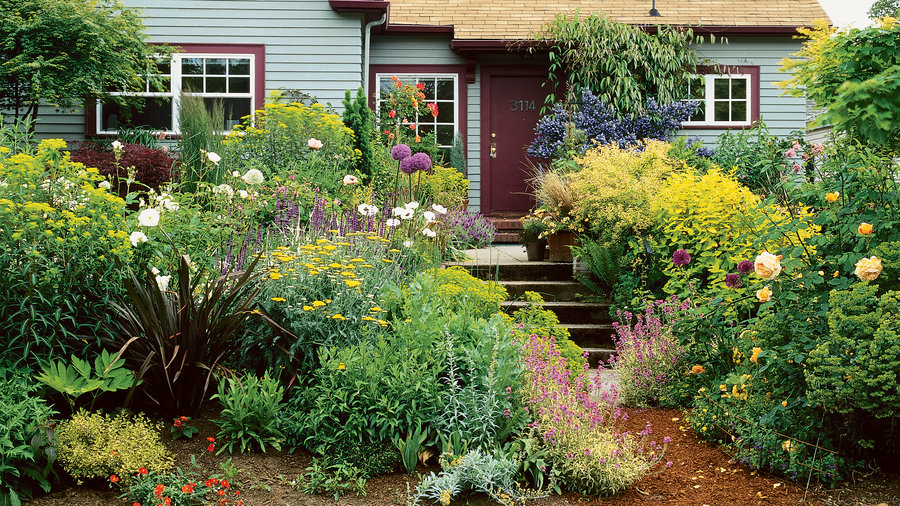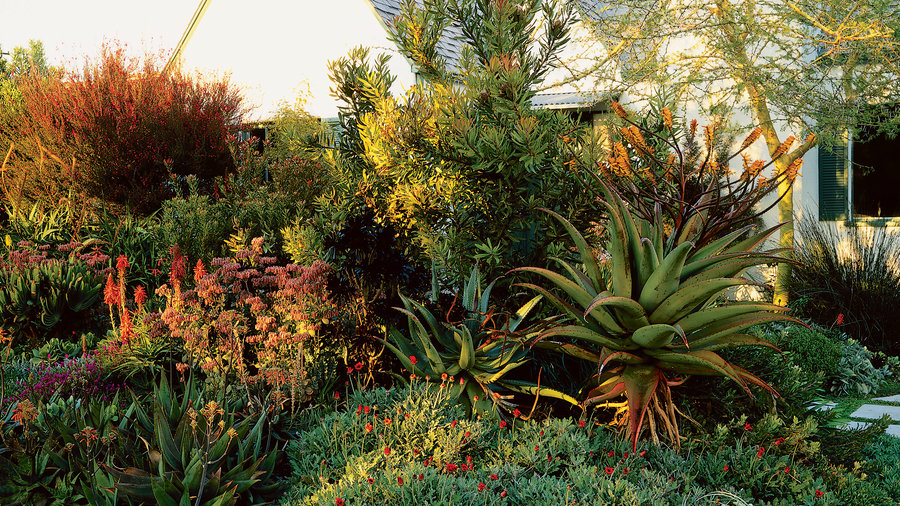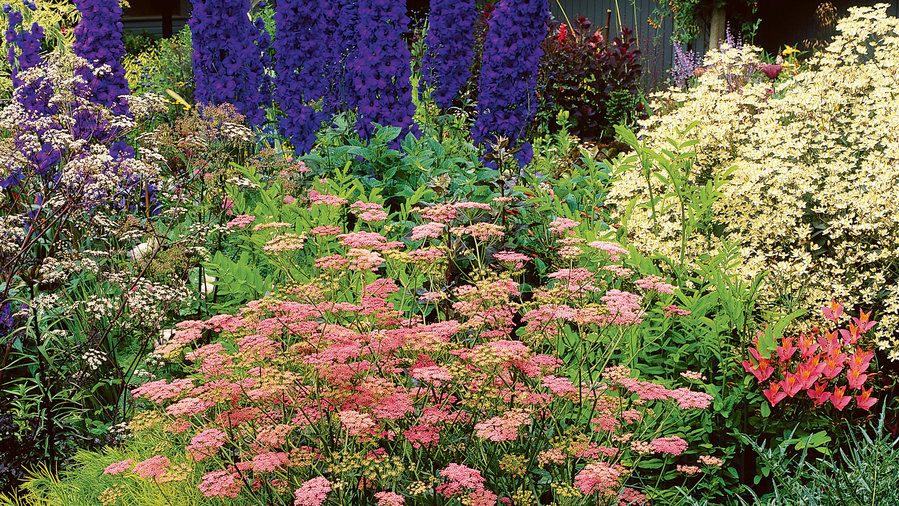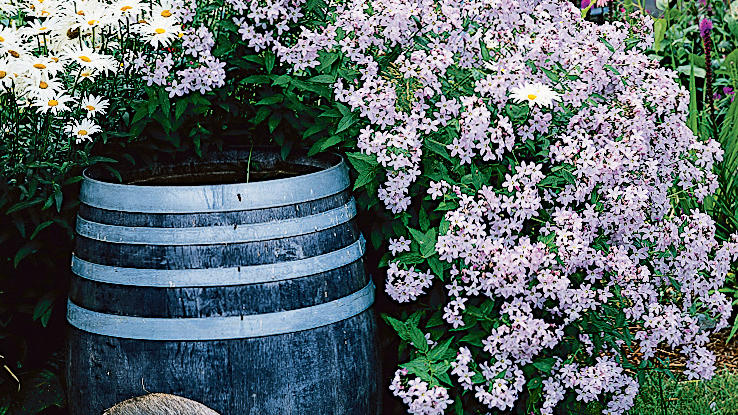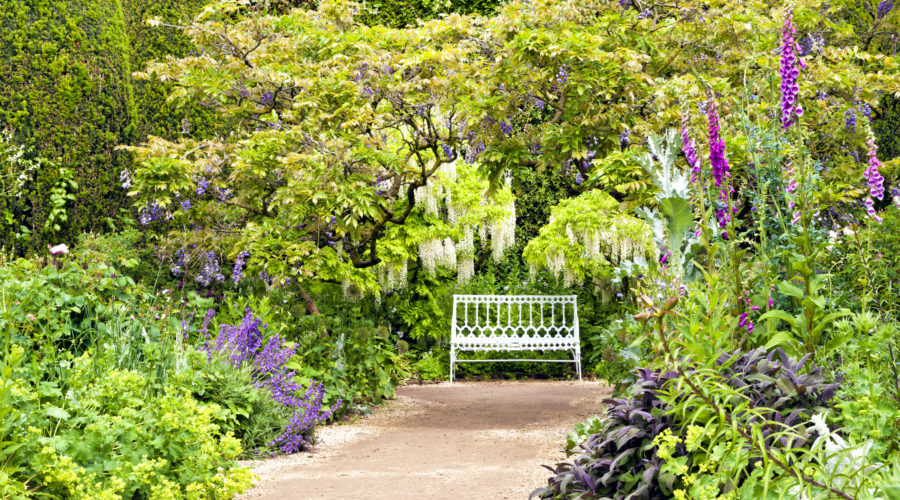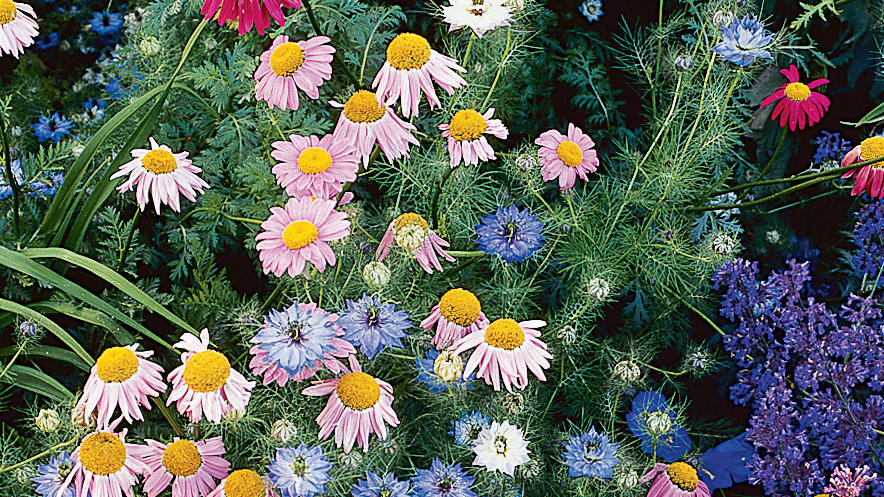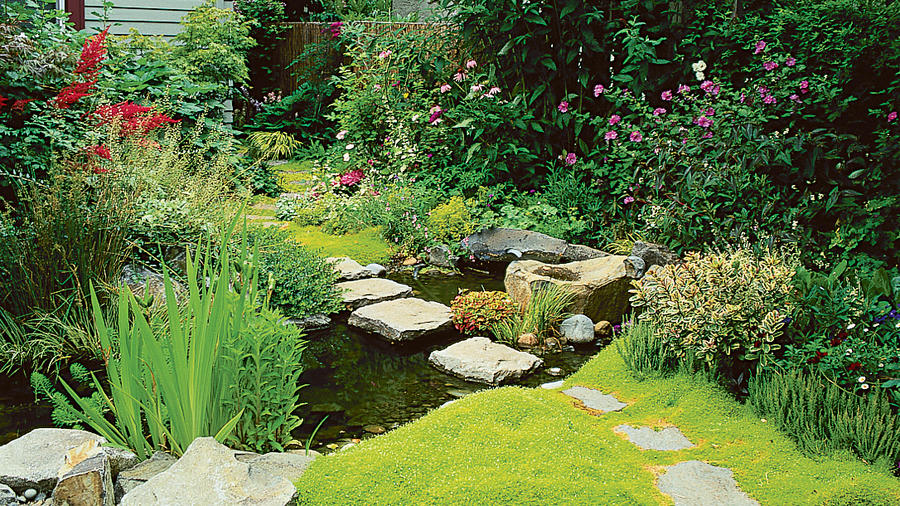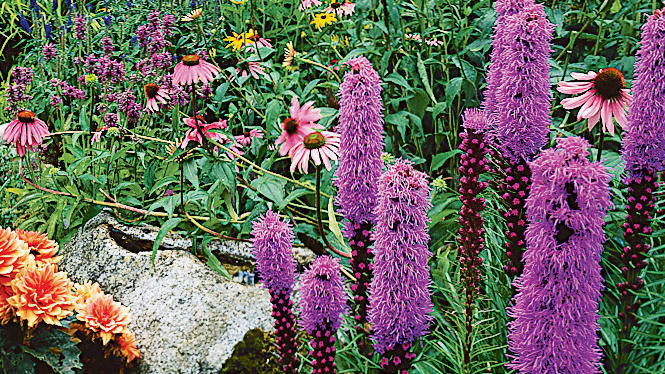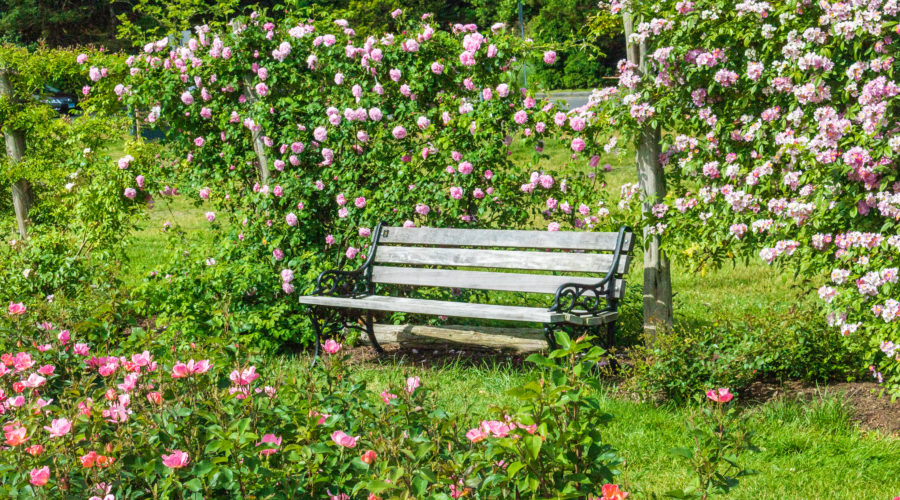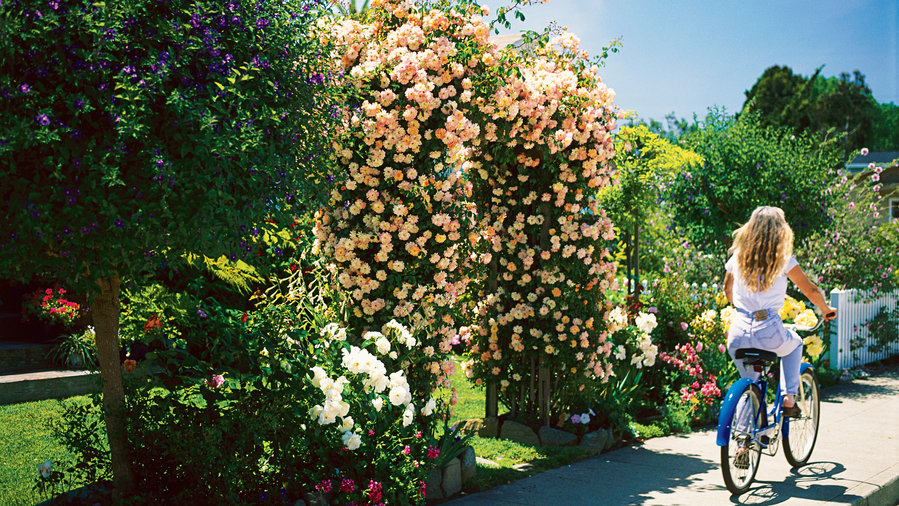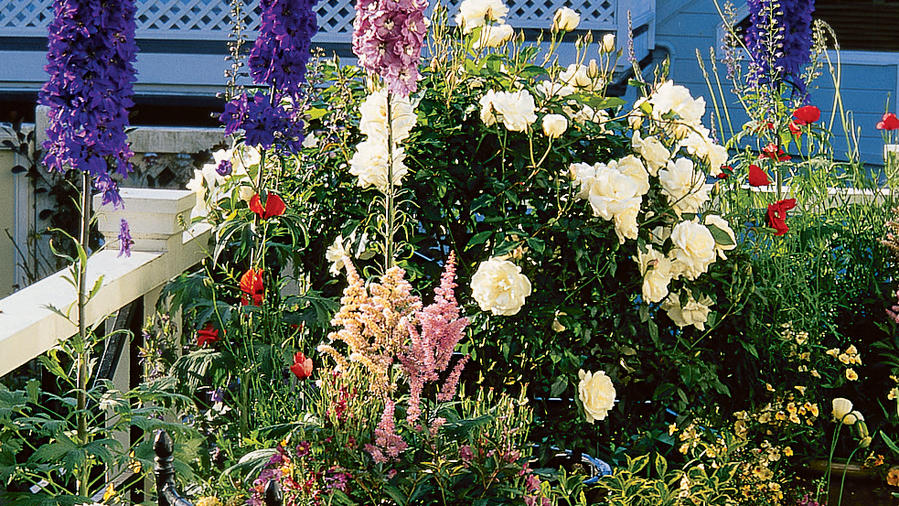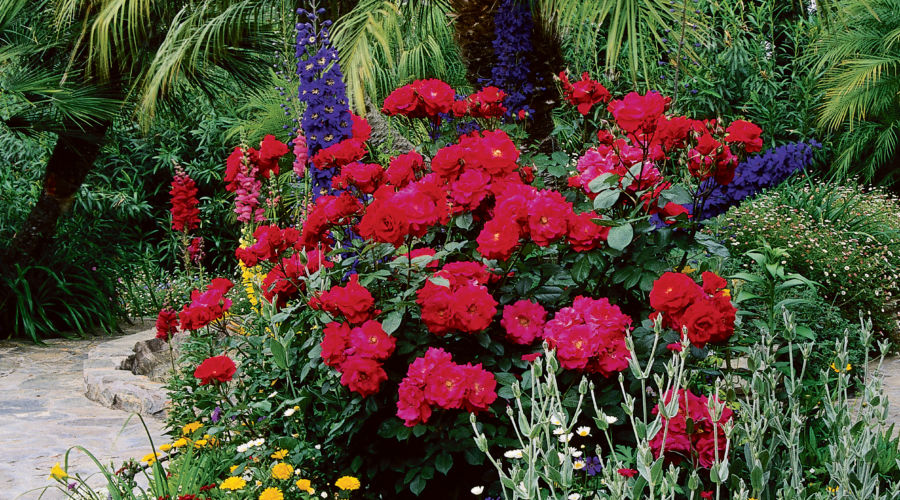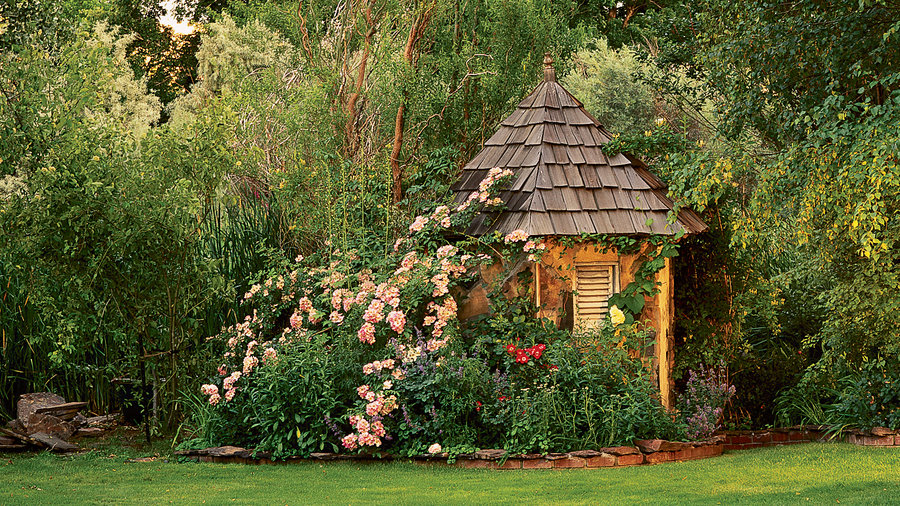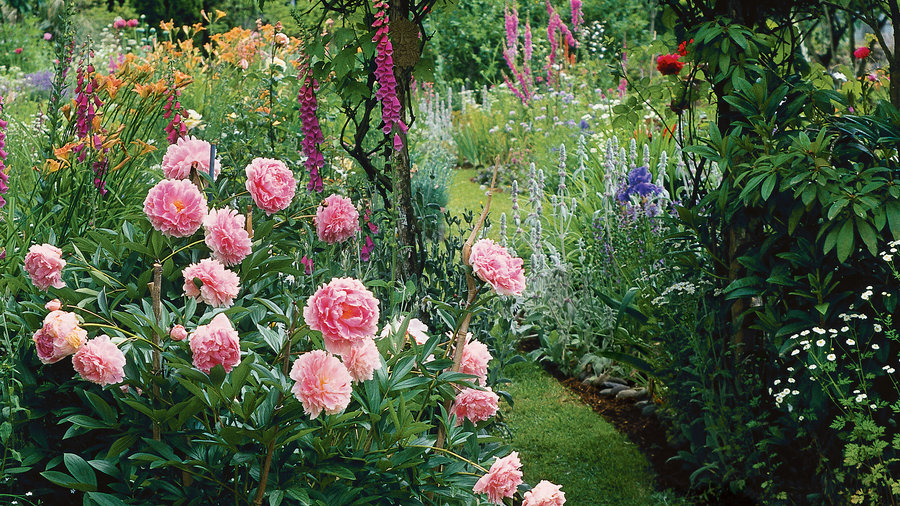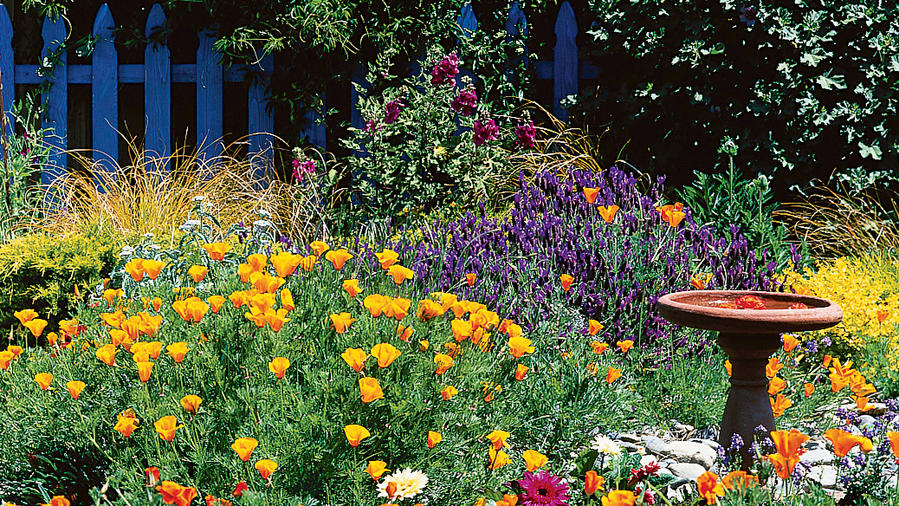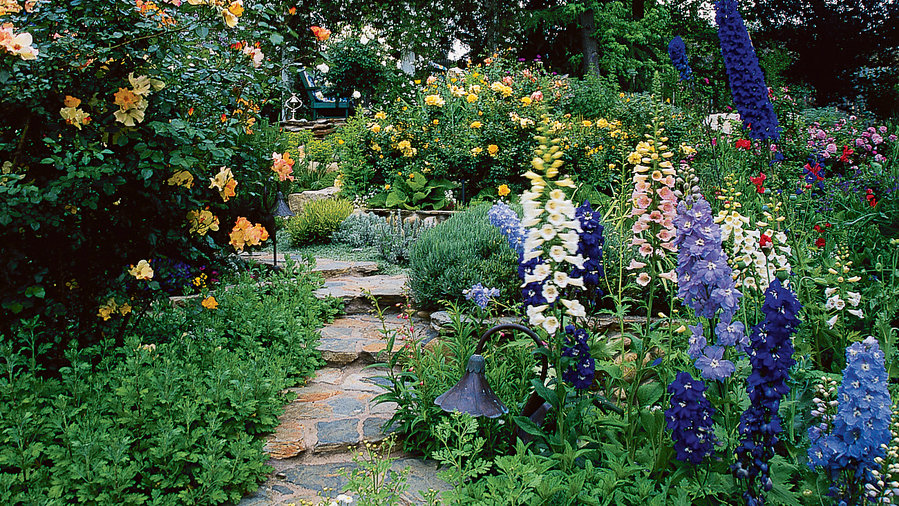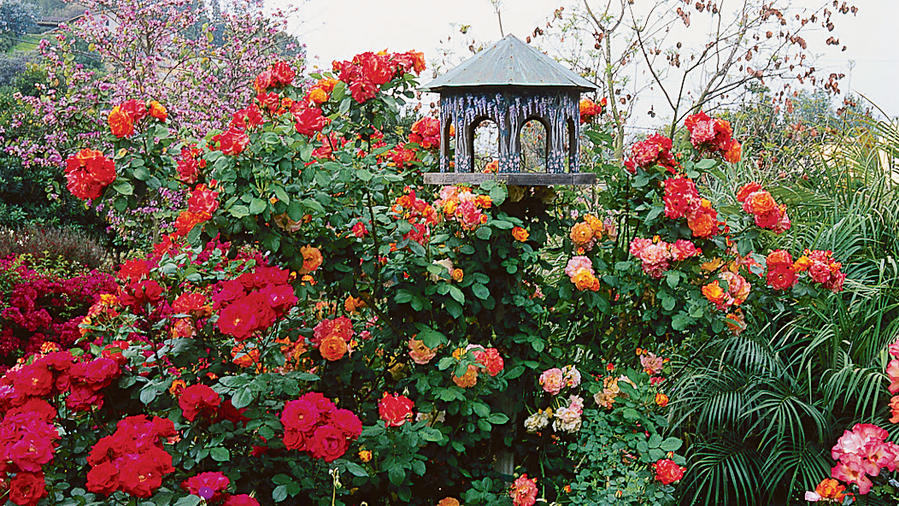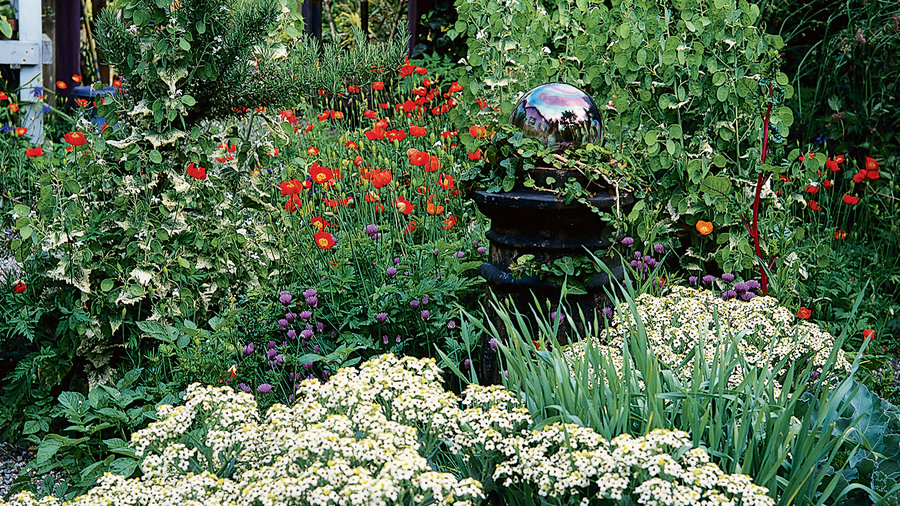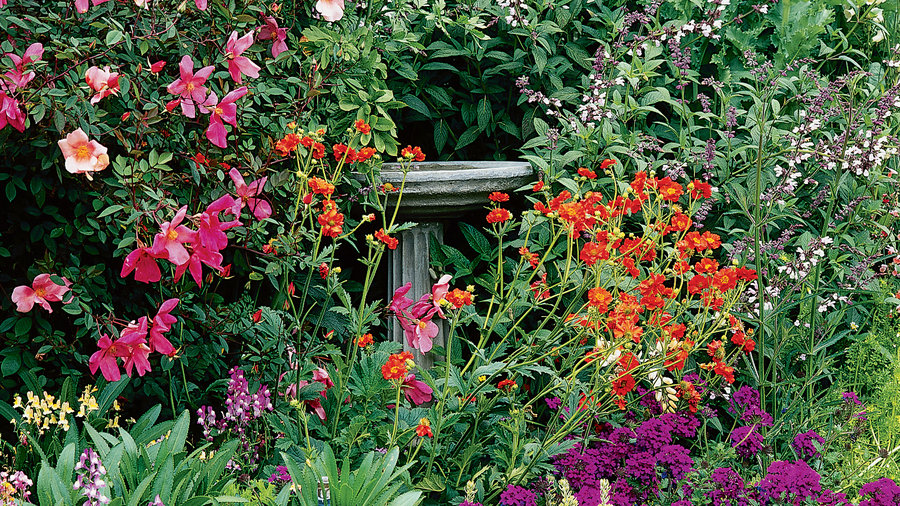Photo by Robin Cushman
How to design a cottage garden
Cottage gardening is an attitude, not a location
You can achieve a cottage effect in the heart of the city as well as the suburbs. All you need is a passion for plants and a willingness to mix them all up.
While English-style gardens draw heavily on hardy perennials, you can accomplish the same look of artful chaos with any plants appropriate to your climate. (See the Sunset Plant Finder.)
Indeed, Mediterranean plants and succulents like agaves work quite well in coastal and desert plantings.
Click ahead for a look at how the traditional cottage garden can morph to fit your own personal gardening style.
Photo by Janet Loughrey
Four-season appeal in Portland
How long does it take to create a show-quality cottage garden? About 18 months and most of that is growing time.
Darcy Daniel created year-round interest in her garden by using plants that hold their places in the off-season. Perennials and shrubs form a multilayered tapestry of flowers and foliage in her front front yard.
To the left of the path, the mauve blooms of Erysimum linifolium ‘Variegatum’ and the burgundy leaves of New Zealand flax are backed by white ‘Iceberg’ rose, yellow-flowered Achillea ‘Moonshine’, and the violet blooms of Allium ‘Globemaster’.
Design: BloomTown Garden Design (503) 331-1783
Photo by Steven Gunther
Exotic variety in Southern California
South African plants work in Alan and Angelika Wilkinson’s exotic cottage garden in Los Angeles. The trick: Using multiple varieties and planting them for an unstudied effect.
African daisies with reddish orange flowers skirt the front, and Aloe marlothii with saffron-colored flower spikes and kalanchoe with pink bell-shaped blossoms fill in behind. Surrounding: Evergreen shrubs, New Zealand tea tree (Leptospermum scoparium ‘Ruby Glow’), Leucadendron ‘Safari Sunset’, and a treelike protea.
Design: Robert Cornell (626/398-5581)
Photo by Allan Mandell
Step 1: Pick plants for a cottage effect
Cottage gardens may appear wild and romantic, but it takes the right combination of colors, textures, and accessories to pull off the look.
In this garden: Lavender blue scabiosa and red Astrantia; rosy Pimpinella and Alstroemeria; lacy white Eupatorium rugosom ‘Chocolate’ and creamy Clematis recta; and deep purple delphiniums.
The prettiest gardens blend at least a few of the plants in the following slides.
Photo by Janet Loughrey
Lacy accents
Wispy foliage and delicate flowers, like those of love-in-a-mist, create an airy effect.
Photo by Jerry Harpur
Edgers
Ground covers soften the hard edges of paths and patios. Here, chartreuse Scotch Moss fringes a pond and steppingstones. Others: blue star creeper, creeping thyme.
Photo by Terry Donnelly
Spires
Plants with tall flower spikes, like gayfeather (Liatris), make bold contrasts to lower-growing ones. Others: delphinium, foxglove, hollyhock.
Photo by Jennifer Yakey-Ault / Getty Images
Roses
They’re naturals in cottage gardens. Plant shrub roses among perennials, climbing types over arbors and against fences or walls.
Caroline Kopp
Choose a space
Carefree style fits anywhere. You don’t need much space to achieve a cottage look.
You can create the same bursting-with-blooms appearance by arranging potted plants on a deck or rooftop. Or plant a portion of your existing garden, perhaps an island bed, with a cottage-style mix of perennials and roses.
Next, options for where to plant.
Photo by Jerry Harpur
On a rooftop
Pots filled with astilbes, delphiniums, and roses create a cottage effect on a San Francisco rooftop.
Design: Sonny Garcia
Photo by Bob Wigand
In a patio bed
Layered plants, from the fringe of white bacopa in front to the red ‘Simplicity’ rose in the center to the blue delphiniums at rear, create a colorful centerpiece for Carol Brewer’s Southern California patio.
Photo by Connie Coleman
In an island bed
Pink ‘Ballerina’ and red-and-white ‘Eye Paint’ roses share an island bed with blue catmint in Sharon Brasher’s garden in Reno.
Photo by Mark Turner
In a backyard
A grapevine-covered pergola frames a grass path in Jasmin Liepa’s garden in Bellingham, Washington. The soft pink blossoms of an herbaceous peony contrast with the towering spikes of foxgloves.
Photo by Norm Plate
In a sunny corner
In this springtime scene from Sunset’s test garden in Menlo Park, California, drifts of California poppies (Eschscholzia californica) are backed by ornamental grass, purple Spanish lavender (Lavandula stoechas), and a tree mallow with rosy blooms. The poppies reseed freely.
Design: Bud Stuckey
Photo by Mark Turner
Add finishing touches
Placing sculptural elements among plants or using them imaginatively as backdrops adds magic and romance to cottage gardens. Use them sparingly, to accentuate the plants rather than overwhelm them.
A curved path like this one will allow visitors to meander among plantings. Put an interesting focal point, like a bench, at the path’s end. These steps lead to a trellised rose.
See more ways to add to your garden next.
Photo by Janet Loughrey
Recycled materials
Integrate a flea-market find into your garden. This window-gate frames a moss-lined path leading to Darcy Daniels’s rear garden.
Photo by Steven Gunther
Bird feeders
Use them as accents among drifts of flowering plants like these roses.
Photo by Terry Donnelly
Sculptures
Set a piece of outdoor art or a gazing ball on a pedestal among plantings.
Photo by Steven Gunther
Birdbaths
Place one among perennials and keep it filled with water to serve thirsty birds and catch reflections of surrounding flowers.

